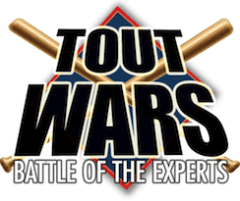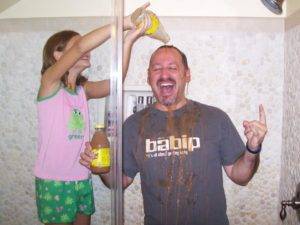[Mar 24 2013, 12:58 PM] meeson834: only an hour away! Im excited too see who will be the 1st one thrown out. Ill bet Kemp
[Mar 24 2013, 1:24 PM] TozRotoThink: Good morning everyone.
[Mar 24 2013, 1:25 PM] Tim McLeod: Lots of injuries in NL, should be very interesting today
[Mar 24 2013, 1:25 PM] Tim McLeod: Morning Toz
[Mar 24 2013, 1:26 PM] TozRotoThink: Morning sir…you have a busy blogging schedule, eh?
[Mar 24 2013, 1:26 PM] KaaashMan: Heya, yep should be.. what does Boggs/Motte go for, for one example.
[Mar 24 2013, 1:26 PM] Tim McLeod: Have a busy everything Toz
[Mar 24 2013, 1:26 PM] TozRotoThink: I hear that my friend. Well, despite being a couple of hours away, I’ll come and live blog with you.
[Mar 24 2013, 1:27 PM] Tim McLeod: excellent!
Continue reading “Tout NL Live Blog! TRANSCRIPT!”
Category: NL
Announcing the 2013 Tout Wars Auction League Lineups!
Who is playing in 2013?
Visit The Players to find out.
Hail to the 2012 Tout Wars Champions!
The Final MASTERSBALL FAAB Report of the Year
Notes from Rob, Brian and Zach.
Thanks guys!
Mastersball Tout Wars FAAB Analysis Sept 24 edition
Your penultimate FAAB moves in AL, NL, and Mixed leagues, with commentary from your Mastersball favorites. Read it here.
Mastersball September 17 FAAB Report
Notes about this week’s pickups in Tout AL, NL and Mixed.
Mastersball FAAB Report!
Rob Leibowitz, Brian Walton and Zach Steinhorn write about this week’s moves.
Tout NL Contenders Speak!
I asked the Contending and Out of It Tout owners some questions, and got back some answers. Here are the answers from the Contenders in Tout Wars NL:
TRISTAN COCKCROFT
What are your chances of winning as a percentage? 45 (keeping in mind that I’d say at least four teams are still very much “in it” — or have a 10+ percent chance of victory).
What percentage of your success this year was based on your draft? 90, maybe more. Eleven of my 12 most valuable individual players this season were original draft picks, and two other current starters were also draftees.
What percentage was based on trading? 8. Juan Pierre was a critical pickup, and Shane Victorino and Ryan Dempster have (so far) proved important, but I can’t forget that all three were acquired for players who were original draftees.
What percentage was based on waiver pickups? 2. I can’t entirely discount the contributions of Erik Kratz, D.J. LeMahieu, Andrelton Simmons, Brad Lincoln, Jonny Venters or Mitchell Boggs, but does any one of those names really drive a team? I say no, being that not a single one has contributed more than 125 useful AB or 60 useful innings (so far).
What was the best thing that happened to your team this year. Aroldis Chapman discovered his command. There probably hasn’t been any one more important piece of my team than Chapman; he has stabilized my ratios and his emergence at closer afforded me the ability to trade two closers, Santiago Casilla and J.J. Putz, to fill other needs.
What was the worst thing? And how did you get over it? If it’s not Vance Worley’s elbow problems, then surely it’s the revolving door I’ve had at the middle infield spots. How did I get over it? Well, Martin Prado gained 2B eligibility, which helped, and LeMahieu has been a serviceable pickup. But consider that this season, I’ve used Prado, LeMahieu, Matt Downs, Freddy Galvis, Ronny Cedeno, Jack Wilson, Alex Gonzalez, Jean Segura, Simmons and Emmanuel Burriss between 2B/MI. That’s right, 10 different players for two spots. It’d sure be nice if Simmons could return this weekend at anything close to the form he showed before getting hurt!
PETER KREUTZER
What percentage of your success this year was based on your draft? 55 percent
What percentage was based on trading? 35 percent
What percentage was based on waiver pickups? 10 percent.
What was the best thing that happened to your team this year. My pitchers for the most part worked out, and if I’d executed on draft day and taken a closer instead of Jurrjens and Wandy Rodriguez, maybe I would have a lead at this point. The other big plus this year were some Rockies taken on reserve or during waivers. Tyler Colvin, Chris Nelson and Josh Rutledge didn’t cost me anything but some aggressive claiming, and have bolstered an offense that misfired from the get go.
What was the worst thing? And how did you get over it? My hitting draft was awful. I hit on Jason Hayward and Buster Posey, but everyone else (Gaby Sanchez and Chris Heisey particularly) either stunk or got off to a slow start. Eventually Aramis Ramirez and Drew Stubbs came around, and I was able to add Bryce Harper and Carlos Quentin in a trade, and the team banged in August. If it keeps it up in September maybe I can get to 95-97 points.
The other issue was a trade I made in June. There wasn’t much of a power market for Juan Pierre, but I had such a lead in steals I knew I had to trade him or Emilio Bonifacio. Unfortunately Bonifacio was on the DL, so I eventually traded PIerre to Tristan Cockcroft for one of the best closers in the NL to that point, Santiago Casilla. Unbelieveably, after two and a half years of excellent relief work (I didn’t care about saves so much as clean ERA and WHIP) Casilla began crashing from the first game he was on my team. And Pierre ran and ran for Cockcroft. The difference in that deal may end up being the difference between first and second, if that’s the way we finish.
DEREK CARTY
What are your chances of winning as a percentage? 30%
What percentage of your success this year was based on your draft? 30%
What percentage was based on trading? 60%
What percentage was based on waiver pickups? 10%
What was the best thing that happened to your team this year? Either Ruggiano’s breakout or being able to find tons of trade partners to retool my team for the stretch run
What was the worst thing? And how did you get over it? Injuries. Lots of injuries leading to either lots of missed time or loss of PT/role upon return (Morse, Storen, Stauffer, Helton, Hernandez etc)
PHIL HERTZ
What are your chances of winning as a percentage? Less than 5 percent.
What percentage of your success this year was based on your draft? 65%
What percentage was based on trading? 10%
What percentage was based on waiver pickup s? 25%
What was the best thing that happened to your team this year. A very good reserve round draft! I took Aoki, Lombardozzi, Parnell and Arredondo. While I eventually cut Arredondo, the other three made significant positive contributions. That’s among my best reserve round draft ever – I’d say best, except in one league a long time ago, I drafted some guy named Pujols in the reserve round.
What was the worst thing? And how did you get over it? Pitching injuries – my three most expensive starters coming out of the draft were Luebke, Lilly and Nicasio, all of whom wound up out for the season (although there are a few noises that Lilly may resurface briefly this month). I tried trading, but eventually gave up when I traded for Gee two days before he wound up in the hospital. For the last few weeks, I’ve been going more and more with just relief pitchers – I’d probably have gone even more in that direction, but for the league’s minimum innings requirement. So far I’ve netted 4-6 points by sacrificing wins – I was already last in strikeouts – for whip and ERA improvement.


